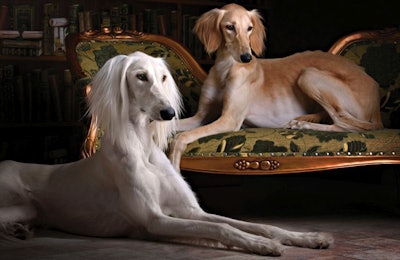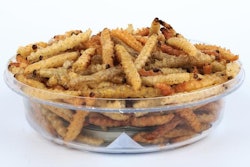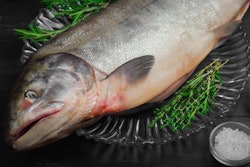
The pet food market in Iran has been experiencing outstanding growth as Iranian pet owners have been gradually moving from feeding homemade food to exploring the advantages of commercial products, according to Dr. Jalaleddin Mirfakhrai, the director of J.M. Vet Group, the biggest importer in the country.
The turnover of commercial pet food has been growing on the domestic market for the past decade, but particular growth occurred in 2016 when the United Nations (UN) lifted trade sanctions against Iran that were imposed over fears about the development of an Iranian nuclear program.
J.M. Vet Group: Iran’s pet food market leader
J.M. Vet Group is the largest importer of pet food in Iran, with a more than 50 percent share of the domestic pet products market. The company sold 1,300 metric tons of pet food in 2017, recording tenfold growth compare to 2011 when it had realized only 120 metric tons, said Mirfakhrai, adding that his company was operating in all segments of the pet food market.
“For the wet segment, Agras Delic with Schesir and Stuzzy brands is definitely the market leader in Iran,” said Mirfakhrai. “These products have a market share of at least 65 percent of the whole wet food market (see Figure 1). If you went to every single pet shop in Iran today, you would see that there is at least one Schesir or Stuzzy display full of these products. Having a Schesir and Stuzzy stand is one of the basic fundamentals of opening a pet shop in Iran today.”
Agras Delic is so popular because it started promoting its products in Iran back in 2011, when the country was under heavy sanctions and most international pet food manufacturers were averse to doing any business there.
“We also import wet food from a company named Mackle Pet Foods, from Northern Ireland, under the Brandy, Cat Club and Naturo brands,” said Mirfakhrai. “Also, starting in 2018 we are the sole distributor for Italian Monge, and we have very strong plans for these products as well in both wet and dry segments; the first order is already on the way.
“Regarding dry pet food, we currently have the second position in Iran in this segment, with Bosch-Tiernahrung products under Bosch and Sanabelle brands from Germany,” he said. “We have been the sole supplier for the anti-narcotic police dogs in Iran for the past four years, and they use Bosch Active dog food. We will also launch the import of Schesir Dry food by Agras Delic in 2018.”
The company also sold almost 200 metric tons of bird and rodent food from Padovan, Valman Italy and Witte Mollen Products in 2017.
Potential growth for Iran’s pet food market
Future opportunities for the pet food market in Iran are hard to overestimate. With a human population of 80 million, only 0.5 percent of citizens have pets, and only 50 percent of pet owners feed their animals with commercial products, according to Mirfakhrai. Nevertheless, Iran has a significant generation of young people who are open to new developments, making growth opportunities for the domestic pet food market extremely significant. In this regard, J.M. Vet Group puts a lot of effort into the development of its products’ sales and distribution.
Unlike in Europe, pet food is not really being sold in Iran in the supermarkets. The main sales channels in Iran are pet shops, pet clinics and pet hospitals. According to Mirfakhrai, the reason for this is that the concept of hypermarkets is rather new for the country, as they started emerging in Iran just several years ago. In this regard, most importers are focused on promoting their products through the various pet clinics and hospitals.
Another trend is the strong rise in demand for commercial pet food in the Iranian provinces.
“Iran is a big country, and luckily the pet market is growing not only in the capital, Tehran, but also in most of the cities — even the small ones,” said Mirfakhrai. “When I started my business, Tehran was making 80 percent of my turnover, but today it is 45 percent. We also have monthly promotions, but of course we are planning to have more to urge consumers towards the shift for commercial pet food. We are also investing a lot on the lower segments of the market, where we will be able to provide our customers with cheaper products but still with well-known brands.
“I am sure Iran will be the biggest market in the Middle East within the next few years, and maybe in 2025 we can be very similar to the markets in Europe,” said Mirfakhrai.
Vorotnikov is a Russia-based journalist covering the pet food and feed markets.
Looking back: Iran pet food market — the benefits of lifting sanctions

















